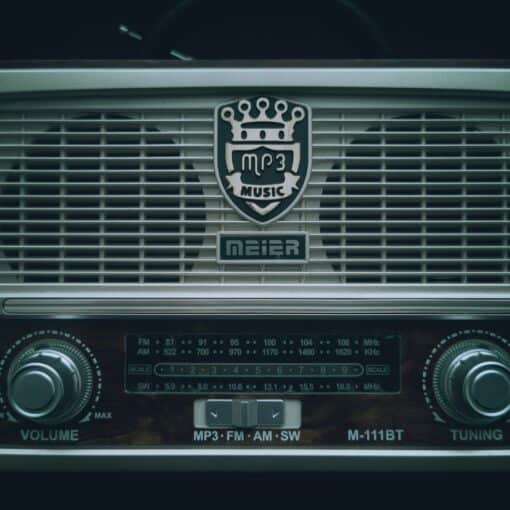Ham Radio (Amateur Radio) and CB radio (Citizen’s Band) have a cordial but hands-off relationship. Once upon a time, you had to be licensed to operate a CB radio, much like you have to be licensed to operate on Ham radio. However, that’s no longer the case for CB, as it is open and available to anyone.
Ham Radios can transmit on CB Channels if the Ham Radio in question has been modified and the operator doesn’t mind breaking the law. There is a degree of legal fog here as well, otherwise known as freebanding (more on that below).
The truth is, the differences between CB and Ham are so exponential that neither should be able to talk with each other and it takes an illegal modification of a Ham radio to technically pull it off.
With that being said, to better explain the differences and separation between the two, we’re going to cover some unknown facts between CB and Ham radio. Or, at least it’s unknown as far as newbies to the Ham radio and CB communities are concerned.
- Ham and CB Radio Require Different Levels of Power
CB radio is limited at 4w of power while Ham radios can operate at 1500w, which is a pretty drastic difference between the two. Obviously, some things would have to be changed for one to communicate with the other.
Power levels are important because too much or too little causes a greater or lesser degree of distortion, and a Ham radio attempting to communicate on CB bands would cause distortion.
Deciding to broadcast on CB bands would likely make a lot of CB radio users really mad. Not to mention the fact that as a Ham radio operator, you would be operating well outside of the bands that are made available for Amateur Radio operators.
In short, using a Ham Radio to communicate on CB bands is a violation of the rules and regulations set down by the FCC and could get you in a good deal of legal trouble.
- Freebanding
If you purchase a Ham radio in the U.S., it’s not going to come with a feature that allows you to tap into the CB Radio band. You would have to modify the Ham radio in order to do that, which can be done, albeit against the law.
Outside of America, however, the FCC has no authority and someone operating a Ham radio could certainly jump over onto the CB band and this is called Freebanding. According to most Ham radio operators, these acts of Freebanding are often overlooked by the FCC.
That’s probably because of the cost of tracking such a person down, only to discover that there really isn’t much that they can do about it after all. Make no mistake, Freebanding is operating Ham equipment illegally and it’s primarily done on the CB band.
The reason that the rules exist as they do is that you can amplify your power output to the point where you can physically destroy sensitive electronic equipment and cause disruptions for up to miles out.
So transmitting power is important and, although a Ham won’t destroy a CB radio or anything crazy like that, it can cause minor annoyances.
Talking to someone on CB, who knows that you’re on a Ham radio, puts them at risk as well, as they shouldn’t be talking to you on your Ham radio while you are operating outside of the allowable bands/frequencies allocated to Ham radio users.
These bands are there for their respective communications, not for working interchangeably with one another, so either party could easily be construed as having acted in bad faith with the other.
- Do Both Ham and CB Require Licenses?
It used to be that you had to have a license to operate on CB radios. However, that time is long past and anyone who wants to own and operate a CB radio can do so freely. It’s the most frequent band used by truckers and other travelers who like to use them on the road.
Ham radio does require a license to operate, not to listen. You can listen on a Ham radio all day long, but the moment you press the transmit button, you’re violating the law. There are three levels of licenses for Ham Radio operators, each with its own level of permissions.
- Technician License: The beginner license for Ham radio operators, grants you permission to use anything above 50MHz but limits your CW, phone, and data at anything below 30MHz.
- General: The next level up grants you more HF privileges in addition to everything that you can do at the technician level.
- Amateur Extra: Unlimited permission to operate on all allowed frequencies in addition to sub-bands at 80, 40, 20, and 15 meters.
It might seem to be a bit much to acquire one or all of the licenses required to operate at the optimal level of an amateur extra license. However, it’s really not that difficult as you can find most of the course material online, some of which is free.
Once you have the course material down, you can take the exam for each license. You can’t test out at the amateur level without first doing the Technician and General. The good news is, you can pay the fee to take your first exam—at a local, AARP-affiliated location—and take all three tests, back to back to back.
If you can properly prepare, it will save you in fees as you have to pay the fee each time you show up to take the exam, so it’s cheaper to just show up once and take all three.
- Can You Accidentally Transmit on CB?
So long as you buy your Ham radio in America, it would be impossible to do so—unless you modified it—because Ham radios sold in America do not have the capability of transmitting on the CB band, which is within 27Mhz.
If you buy your Ham radio while traveling outside of the United States, it’s possible that you could end up with one that will transmit on that band, but it would be rare. If you discover that your Ham radio has that capability, it’s best to stay away from it.
If you own a Ham radio and you really want to communicate with someone on CB, the best thing to do is go purchase a CB radio. No license is required and you can get started right away. There’s no law against a Ham radio operator owning and operating a CB radio.
In fact, if you’re a radio enthusiast, it’s a good idea to expand your communication options by purchasing a CB radio and setting it up along with your Ham radio. Simply use your Ham radio for the bands that you earned by acquiring your license and your CB radio for everything else.
That’s arguably the best set up after all, especially if you are new to Ham radio but want to keep your CB radio set up and contacts.
Final Thoughts
Those are some of the facts that you need to know, especially if you are new to Ham and/or CB radio and are unfamiliar with freebanding. It’s not as if it’s difficult to own a CB radio and a Ham radio. If you want to communicate with both, simply own both and do so.
References
Can Amateur Radio Talk to CB?
Retrieved from: https://hamradioplanet.com/can-amateur-radio-talk-to-cb/
Silver, H. (March 26, 2016). Types of Ham Radio Operator Licenses
Retrieved from: https://www.dummies.com/article/technology/digital-audio-radio/ham-radio/types-of-ham-radio-operator-licenses-160687





